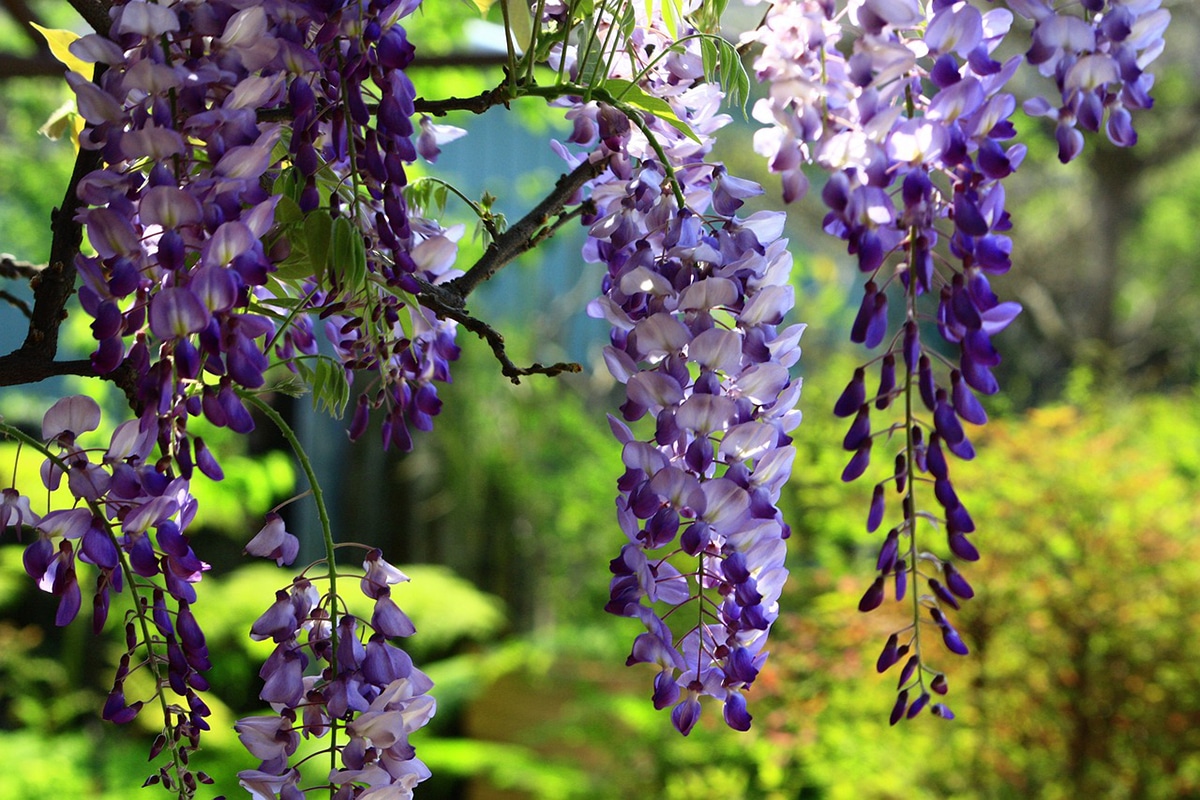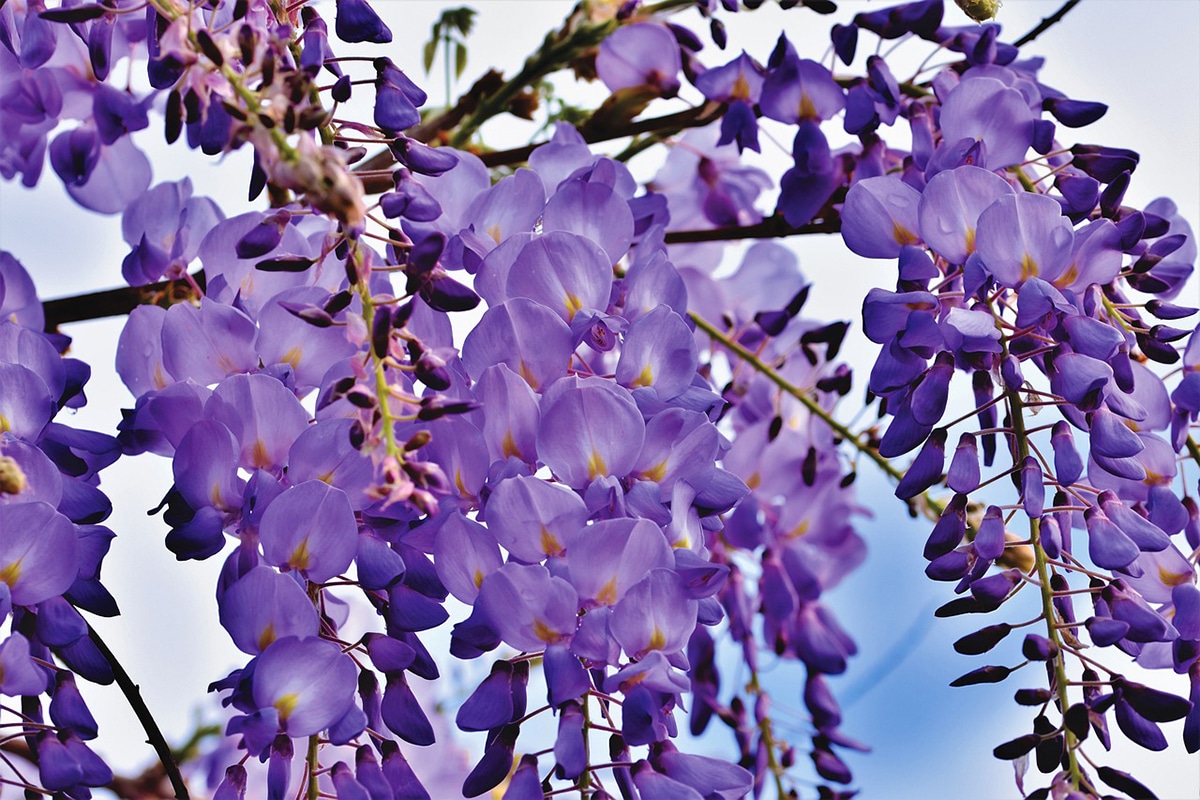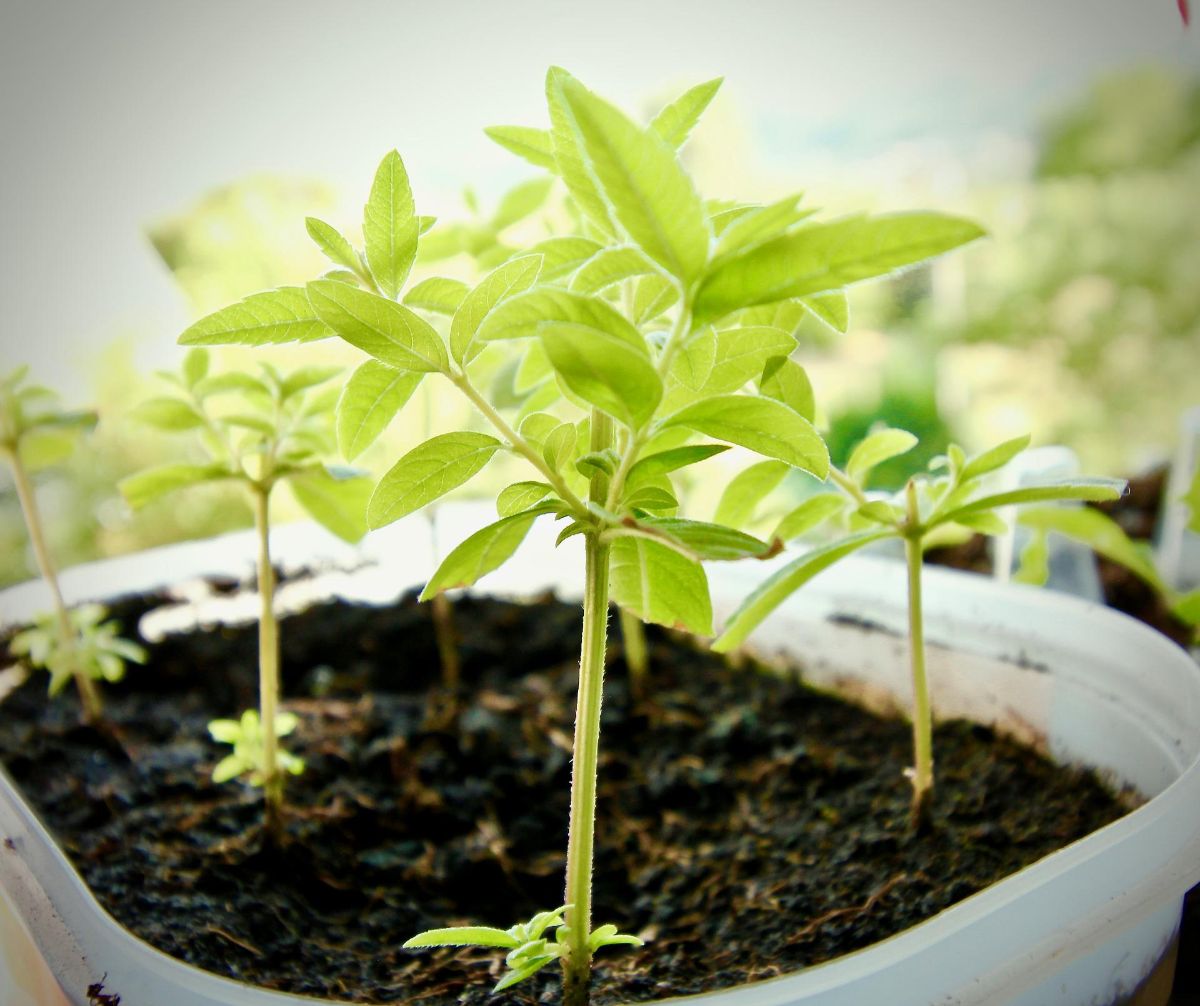
Wisteria is a climbing plant that adds a touch of color and beauty to any garden. It is a versatile and easy-to-grow vegetable. but one of the best ways to propagate it is through cuttings. Cuttings are young, healthy branches taken from a mother plant, which are then planted to develop roots and become a new plant. In this article we will explain how to make wisteria cuttings so that you can be successful in propagating this beautiful plant.
We will learn when is the best time to take the cuttings and how to prepare them until they are ready to be transplanted. With this information you will be able to enjoy new wisteria plants in your garden without having to spend a large amount of money on new specimens.
How to make a wisteria?

when playing glycine, it should be noted that there are several methods that we can apply:
- Seeds: Wisteria can be propagated through seed, but this method is not as common because the resulting plants are not genetically identical to the parent plant.
- Layers: Another method of propagating wisteria is layering. This process consists of bending a branch towards the ground and holding it in place until roots develop. Once the branch has developed roots, it can be cut and transplanted.
- Root division: Wisteria can also be propagated by root division. This is done by removing a section of the plant with a thick root system and planting it in a different location.
- Grafts: Grafting is a propagation technique in which a part of a plant (the graft) is attached to another plant (the rootstock). The advantage of this method is that the graft benefits from the characteristics of the rootstock, such as resistance to pests and diseases, better resistance to weather, etc.
However, we are interested the most common propagation method: Cuttings. In this process, a branch is taken from a healthy mother plant and planted in a moist substrate for the roots to develop. Later we will discuss how to do it step by step.
Keep in mind that some of these methods are more effective than others and may depend on the variety of wisteria that we are trying to propagate. It is advisable to investigate and test to see which is the most suitable method for our needs.
How to make wisteria cuttings step by step
If we are clear that we want to propagate our wisteria through cuttings, we must follow the following steps:
- Create the cutting: The first thing is to choose a healthy, vigorous branch from the parent plant that is at least 6 inches in length. We will then use clean, sharp pruning shears to cut the branch at a 45 degree angle, just below a branch node. Then you have to remove all the leaves and twigs from the bottom of the cutting.
- Prepare the cutting: Once we have the cutting, it is time to lightly scrape the bark at the base to expose the white wood. The most recommendable is to submerge the cutting in a solution of rooting hormones for a few minutes
- Plant the cutting: Then we have to plant the cutting in a pot with a mix of peat and sand substrate. Then it's time to cover the pot with plastic to create a humid environment and keep it in a warm place with indirect light.
- Irrigation and transplant: It is important to water regularly and wait for the roots to develop before transplanting it into the ground.
It should be said that Success in propagating cuttings depends on many factors, including the type of plant, the time of year and environmental conditions. It is important to ensure that the cuttings are in a humid and warm environment so that the roots develop properly.
When to make wisteria cuttings?

Now that we know how to make wisteria cuttings, it's time to figure out when to do it. The best time to carry out this task and succeed in its propagation is when the plant is in a period of active growth. Generally, this happens in spring or early summer.
However, the exact moment may vary depending on the climatic zone in which we find ourselves and the specific environmental conditions of our garden. It is important to choose young, healthy branches that are not flowering or maturing. It is generally recommended to take wisteria cuttings in spring, when the plant is starting to grow again, but before the leaves and buds are fully developed. It is also very important to avoid taking cuttings on hot days, as they can dry out prematurely.
How long does wisteria take to grow?
The time it takes for a wisteria cutting to grow depends on several factors, including environmental conditions, the size of the cutting, and the variety of wisteria. However, in general, a wisteria cutting can be expected to have sufficient roots to be transplanted. in about 6 to 8 weeks after being taken.
It is important to keep in mind that during the first weeks after taking the cutting, it is necessary to keep it in a warm and humid environment to aid in root development. It is also advisable to cover it with plastic to keep it moist and prevent it from drying out.

Once the cutting has developed sufficient roots, it can be transplanted into a larger pot or into the ground. However, it is important to note that even if the cutting has developed roots, it can still be delicate and require extra care until fully established.
It must be taken into account that the rooting time of the cuttings can vary depending on the environmental conditions, so It is important to be aware and monitor their growth. If the cutting is not developing roots after several weeks, there may be something wrong with the conditions it is in and it will need to be adjusted or changed.
If you want to beautify your environment by reproducing your wisteria, you already have all the necessary information to be able to do so. I hope it goes well for you!